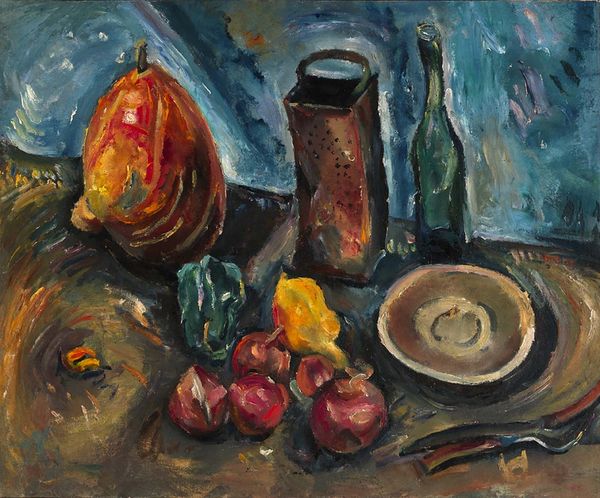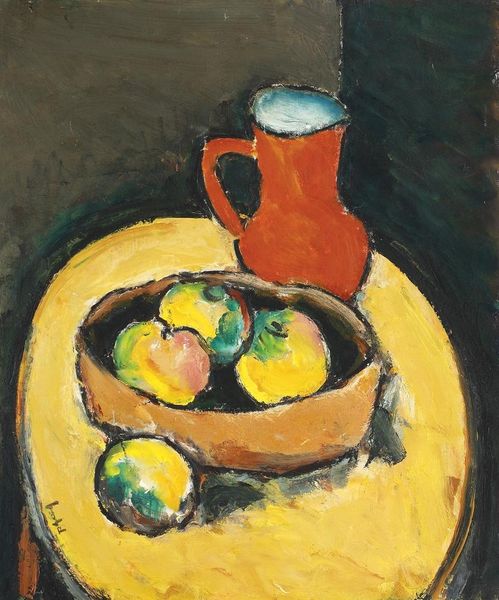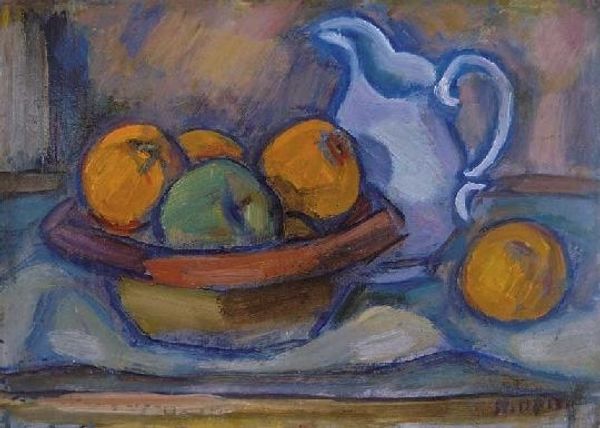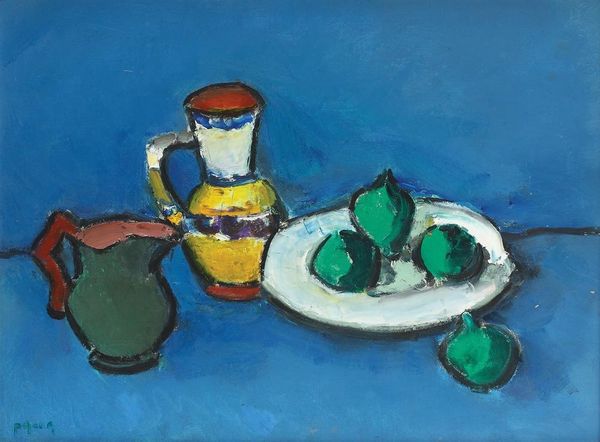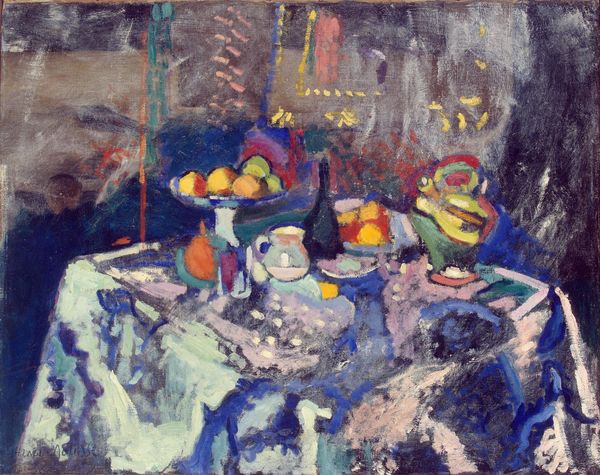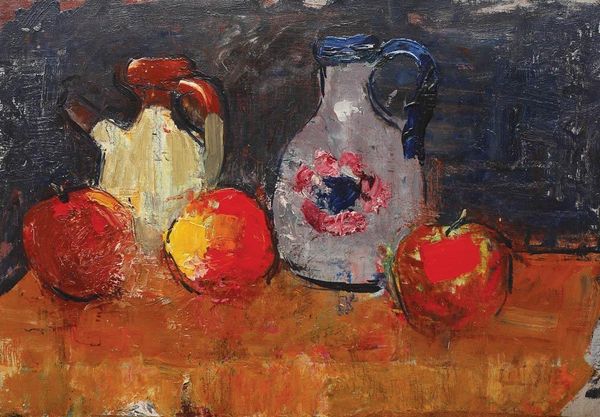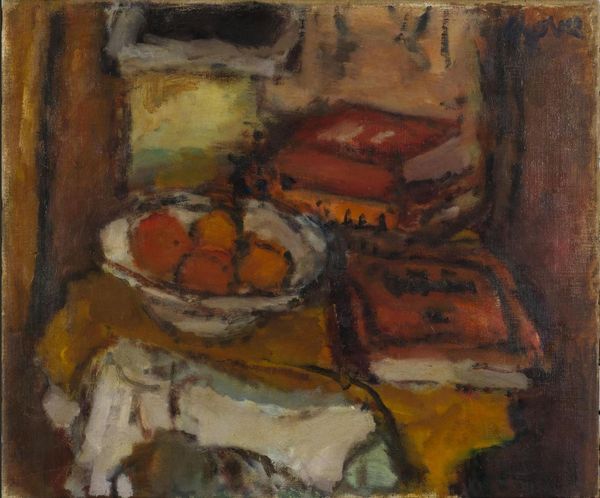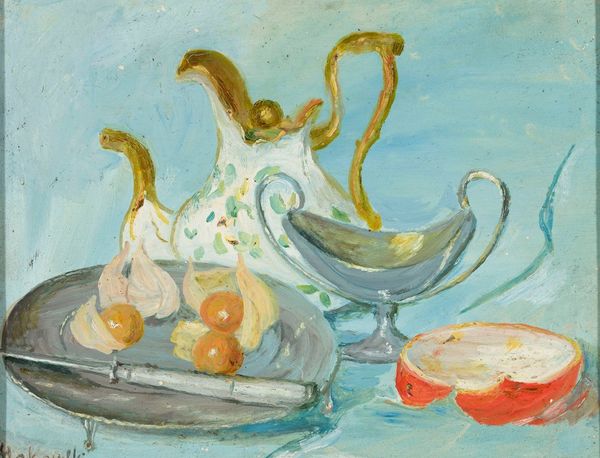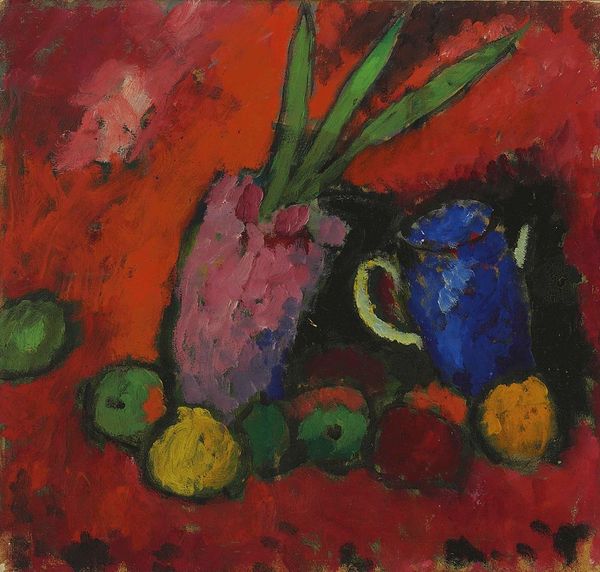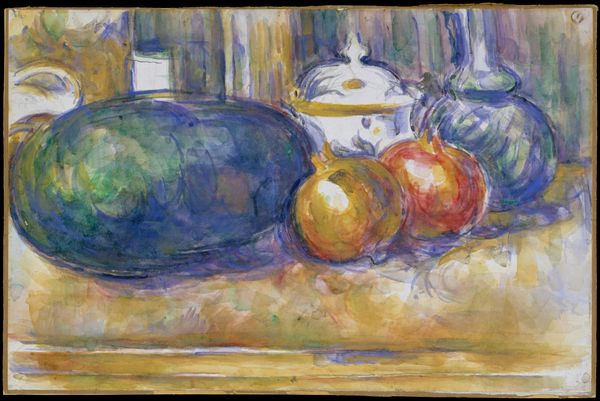
painting, oil-paint
#
fauvism
#
painting
#
oil-paint
#
oil painting
Copyright: Public domain US
Editor: So this is Émilie Charmy’s "Still Life" from 1904, rendered in oil paint. The vibrant colors give it an almost unsettling energy, contrasting with the traditional subject matter of a still life. How do you interpret this piece? Curator: The dissonance is fascinating, isn’t it? While Charmy engages with the familiar subject of a still life, she does so through the Fauvist lens. This carries a symbolic weight. Still lifes, historically, represent the transient nature of life, “vanitas.” The Fauvist colors, however, inject an almost aggressive vitality, questioning mortality itself. Do you see how the palette shifts the reading? Editor: I do. It feels less about acceptance of death and more about...a rebellion against it? The bold greens and reds seem to fight against fading away. Curator: Precisely. The colors clash but also vibrate together, almost as a psychological projection of internal conflicts. The objects are also distorted. Notice how the curves of the fruit and vegetables echo the Art Nouveau style that preceded Fauvism. They appear sensuous, ripe, perhaps hinting at suppressed desires or societal constraints Charmy might have felt. Editor: That’s not something I had picked up on initially. Now, I’m seeing the arrangement as representing her, or women generally, wrestling with their role in society. Curator: Exactly! It is not just about decorative objects, but something else entirely, don't you think? Editor: Yes! Looking at this painting now, I see more than just fruits on a table. I am glad to have uncovered it all! Curator: Indeed. And isn't it wonderful how the emotional language of color can completely transform an artwork’s story?
Comments
No comments
Be the first to comment and join the conversation on the ultimate creative platform.
